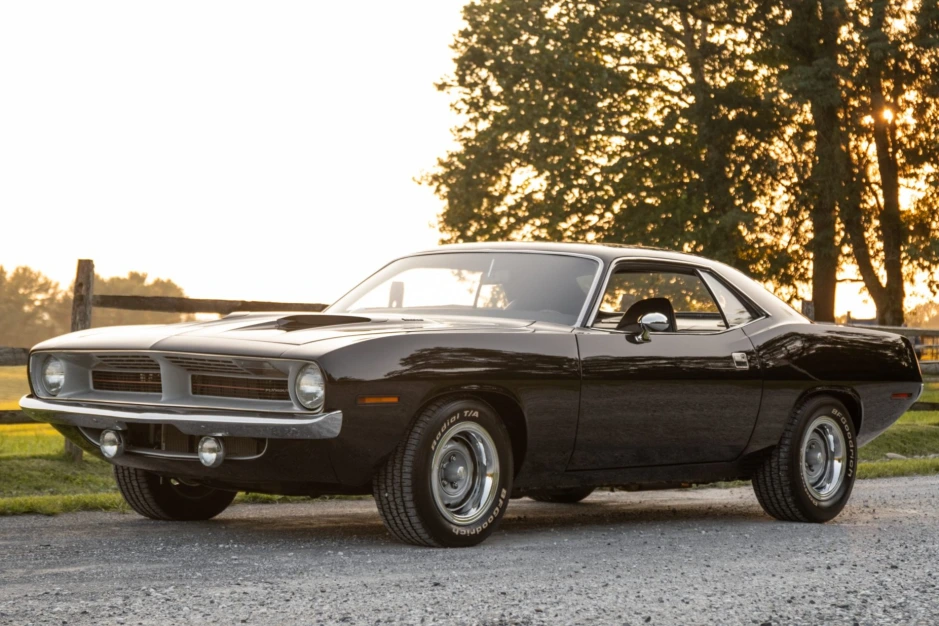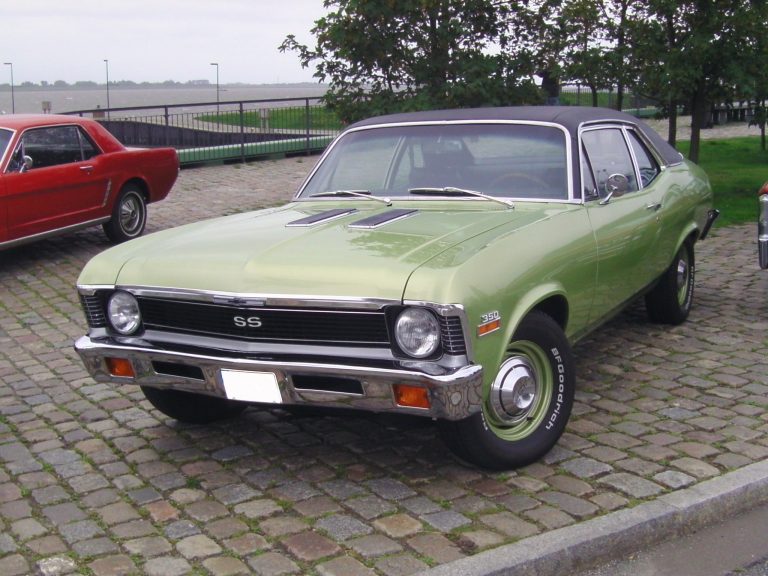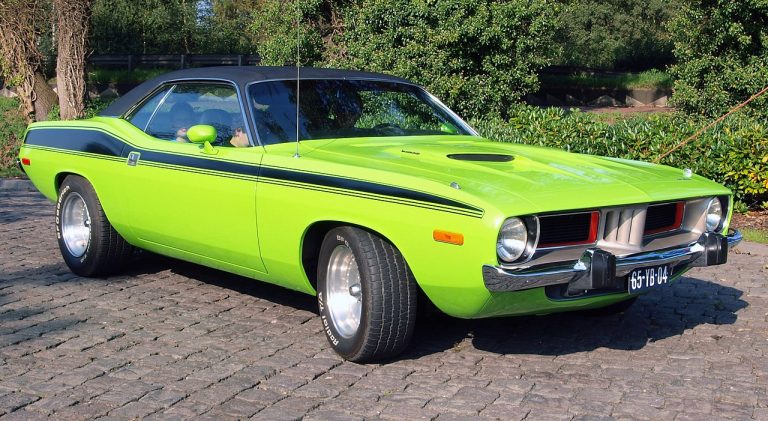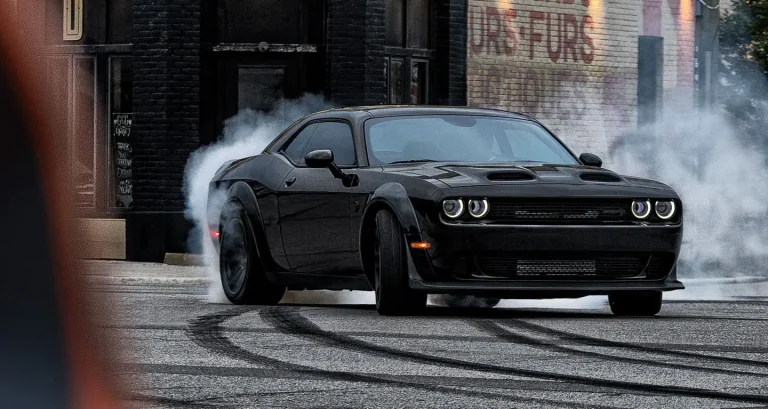1970s Plymouth Cars

Meet Chandler
Chandler has a bachelors and masters degree in history as well as a passion for classics and muscle cars. His education and historical knowledge makes him skilled at crafting highly detailed articles about America’s muscle cars and automotive history. His love of muscle cars is undeniable, with him seeking them out at every opportunity during his visits to auto shows and car meets. Chandler’s knowledge and enthusiasm towards automotive history make him a great asset to the Muscle Car Club community.
In the 1970s, Plymouth produced some of the most iconic muscle cars of all time. Models like the 1970 Plymouth Roadrunner, ‘AAR ‘Cuda, and SuperBird, are now some of the most sought out cars in the entire world. 1970s Plymouth cars were powered by Mopar engines, making them comparable with similar era Dodges. However, Plymouth managed to retain a signature look and style that was both menacing and inviting at the same time.
Chrysler originally introduced Plymouth as the affordable and entry-level line of Chrysler vehicles. Yet, in the 1970s they gave much more expensive muscle cars a run for their money. Plymouth’s biggest year was 1973, when they sold nearly a million units, but it was mostly downhill from there. Emissions regulations and the oil and energy crises caused Plymouth’s fortunes to plummet, and their muscle cars became almost non-existent by the middle of the decade.
This article will look at the quintessential Plymouth muscle cars from the 1970s. We will explore the history, evolution, and performance of the most legendary and important Plymouth models of the decade.
First, we’ll start with the history of 1970s Plymouth muscle cars, before taking a deeper look at five iconic models and the engines that powered them.
Plymouth Muscle Car History
It was in 1962 that Plymouth truly entered into the muscle car game as one of the first true competitors. Their 1962 Plymouth 413 Max Wedge engine found a home in several models, including the Belvedere and Savoy. It got its name from its unique wedge-shaped combustion chamber, a feature of all Chrysler B engines. The 413 Max Wedge was so popular that the Beach Boys immortalized it in a song, “Shut Down.”
In the mid-1960s, Plymouth quickly established its name in the muscle car community as a powerhouses on the Mopar platform. They introduced the Road Runner, Barracuda, and Belvedere GTX, which all featured t designs and massive engine bays. As the 1960s wore on, Plymouth began to put larger and larger displacement engines in their cars. By 1970, Plymouth was well versed within the muscle car game.
Unfortunately, Plymouth’s rapid descent started in 1971, which was the last true year for Plymouth muscle cars. Stricter emissions regulations and the oil and energy crises were the main cause. In 1972, Plymouth also had to start listing horsepower ratings according to SAE net instead of SAE gross. This did not make the cars less powerful, but it appeared that way and destroyed their marketing for muscle cars in the process.
By 1972, the big block V8s were gone on all models except the Road Runner. The largest available engine for all other models became the small block 360 V8 making 245 hp. Starting in 1975, all that connected Plymouth with true muscle cars of their past was their styling and marketing. Though they continued with the Road Runner until 1980 and the Duster until 1976, Plymouth muscle cars were already effectively dead.
1970s Plymouth Cars
Now let’s take a look at the top 1970s Plymouth cars.
- Plymouth Barracuda
- Plymouth Road Runner
- Plymouth Duster
- Plymouth SuperBird
- Plymouth Belvedere GTX
1970-1974 Plymouth Barracuda
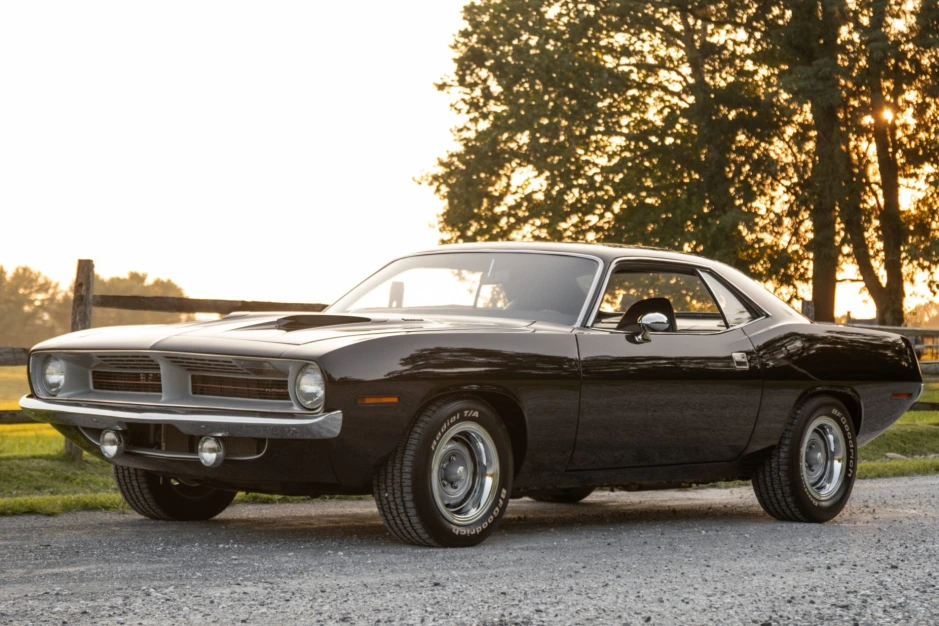
In 1968 and 1969, Plymouth started to transform the Barracuda into a performance machine, and by 1970 it was complete. It got the new E-body platform that the Dodge Challenger had, though it had a two inch shorter wheelbase. Models equipped with the 440 and HEMI V8s got high performance suspension and dual hood scoops, but they didn’t function. All models also had the optional shaker hood scoop, so named because it was connected to the engine and shook when the engine moved.
1970 was also special because of the ‘AAR ‘Cuda, which was only released for that year. It had a matte-black lift-off fiberglass hood, black ducktail spoiler, and body stripes to give it an aggressive look. The shocks and springs were also new for the 1970 ‘AAR ‘Cuda, and it featured dual side-exit exhausts that screamed. The 1971 Plymouth Barracuda got a revised grille with different headlights, dummy front fender vents, and new segmented tail lights to match the new grille. These were the last redesigns the Barracuda would receive until it ended production.
The 1970 Plymouth Barracuda is truly a spectacular machine, and the 340 Six Pack powered ‘AAR ‘Cuda is one of the most revered muscle cars of all time. The Barracuda was available with the 340, 340 Six Pack, 383, 426 HEMI, 440, and 440 Six Pack V8 engines from 1970-1971. Yet, by 1972 the big block V8s were gone as options for all models. With them went the true muscle car character of the Barracuda, and the 1972-1974 models are much less desirable.
1970-1979 Plymouth Road Runner
The Plymouth Road Runner (or RoadRunner) first started production in 1968 as a bare bones and cheaper version of the luxury Belvedere GTX. In 1970, the Road Runner got revised front and rear end styling, and the famous “Air Grabber” hood became available. The “Air Grabber” hood had a power operated door that would raise to function as a massive hood scoop. It fed cool air directly into the intake, allowing for both better flow and lower intake temperatures.
Plymouth updated the styling for 1972 and gave the Road Runner an electronic ignition and redesigned sway bar. It was also available with a GTX option from 1972-1973. Starting in 1976 the Road Runner was moved to the Volare platform, after previously running on the Plymouth Fury platform the year prior. In 1977, the Plymouth RoadRunner got its first ECU module, the famous Chrysler Lean Burn system. It controlled a 4-barrel electronic feedback carburetor for the 360 V8 and increased fuel economy and controlled ignition advance.
The 1970 Plymouth Road Runner is an iconic muscle car, and those with either the 426 HEMI and 440 Six Pack options are incredibly valuable nowadays. From 1970-1971, Plymouth offered the Road Runner with the 383, 426 HEMI, or 440 V8s as options. Unfortunately, every year after Plymouth detuned the engines due to increasing emissions constraints. The 1972-74 Road Runner still had the 440 Six Pack making decent power (though it appeared much smaller due to the new SAE net rating requirements), but the rest of the engine lineup was pretty neutered.
The big blocks disappeared from the Road Runner in 1975 and never returned. None of the models ever cracked 200 hp, and the Road Runner muscle car was effectively dead from then until its official end of production in 1980.
1970-1976 Plymouth Duster
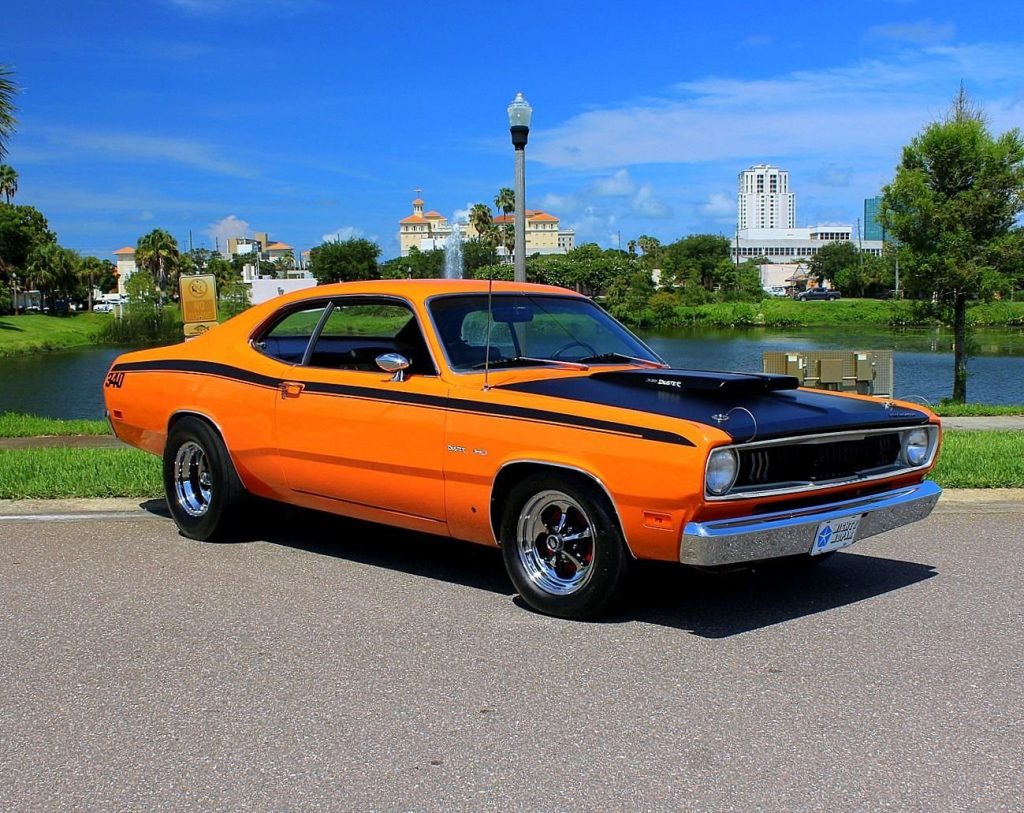
Plymouth introduced the Duster in 1970 as a high performance version of their compact Valiant model. It featured the same interior but had a rounded fastback and other curved styling. It was also much cheaper than its pony car rivals, like the Road Runner or Mach 1 Mustang. And though it did not deliver the same performance, it was not far behind.
Plymouth sold the 1970 Duster standard with either a 198 or 225 I6 or a 318 V8. However, there was also the small block 340 V8 option. The 340 option came with a four barrel carb, 3-speed manual transmission, and a host of suspension and handling upgrades. 1971 saw the addition of the Twister trim level, which had new Rallye wheels, racing mirrors, functional hood scoops, but it was only available with the 318 V8 and not the 340.
The Duster never got any of the big block V8s, and the 340 V8 was not an option after 1973. Power output on the 340 V8 never changed, though from 1972 on it was rated at 35 hp lower (240 hp) due to new SAE net reporting requirements. From 1974 until the Duster’s final year in 1976, it was only available with the 318 and 360 small block V8s or smaller slant I6s. By its end, Plymouth was more concerned with fuel economy than they were with power output on the Duster.
1970 Plymouth Superbird
The 1970 Plymouth Superbird (or Super Bird) is one of the most unique and legendary muscle cars of all time. Its massive rear wing is an homage to its NASCAR origins and inspiration. Plymouth created the SuperBird at a time when cars when NASCAR’s homologation standards required all cars to also be full production models. It was made to function as a high performance race car that also happened to be sold to the public.
The Superbird was heavily based around the 1970 Road Runner and 1969 Dodge Daytona. Its front was similar to the Road Runner, but a special nose added 19 inches and downforce. The wing was also larger and had a sharper angle than the Daytona’s on which it was based. Plymouth built just under 2,000 Superbirds to comply with NASCAR’s homologation requirements, making them incredibly rare finds today.
The Superbird appeared for only one year, 1970, and was available with three engines. The Super Commando 440 V8, with a four barrel carb mounted on top, was the most popular but also the lowest powered. There was also the option for the 440 Six Pack and the 426 HEMI. However, the latter sold less than 100 units during its run, and the 440 Six Pack wasn’t much more popular.
1970-1971 Plymouth GTX
Plymouth introduced the GTX in 1967 as the “Gentleman’s” hot rod and marketed it to the more luxurious and affluent Plymouth buyers. Originally, it was available as a coupe or convertible, but by 1970 the coupe was the only option. That year it got a new power bulge hood and rear brake scoops, though they were non-functional. The GTX also had the same “Air Grabber” hood option as the Road Runner for 1970 on. However, iit was only available for 440 Six Pack and 426 HEMI equipped models.
For 1971, the GTX’s final year, the wheel base was made smaller and the styling was revised with rounded fenders and more curves. From 1970-1971, Plymouth offered the 440 V8, 440 Six Pack V8, and 426 HEMI V8 engines as options.The standard 440 V8 was by far the most popular, and barely 102 versions with the 426 HEMI were sold.
The 1970 and 1971 Plymouth GTXs were often compared to the Road Runner, which was essentially the budget version, but the GTXs sold far less well. The GTXs certainly competed in the power department, but they were much heavier than the Road Runners. The extra weight hurt performance and handling, and sales were almost incomparable, with the Road Runner the clear fan favorite.
From 1972-1974, the GTX ceased to be its own model and became only an option for the Road Runner. After 1974, the GTX option was completely discontinued, and has not reappeared since.
1970s Plymouth Muscle Car Engines
340 and 340 Six Pack V8s
As far as muscle car engines go, the Mopar small block 340 V8 and 340+6 (340 Six Pack) V8 are some of the most well known of all time. From the Chrysler LA engine family, the 340 V8s were relatively low weight but produced exceptional amounts of power. It was 22-cid larger than the previous 318 V8, and also had bigger exhaust and intake valves, larger exhaust manifold, two-level intake manifold, high flow heads, and a forged crank, and forged rods. The 340 V8 also had a higher compression ratio of 10.3:1.
The 340 had an even higher performance version, the 340+6 or 340 Six Pack, for the ‘AAR ‘Cuda. For 1970, the standard 340 made 275 hp and 340 lb-ft, while the 340 Six Pack made 290 hp and 345 lb-ft. The Six Pack added 3 double-barrel carburetors, higher performance heads, and a freer flowing intake.
Starting in 1972, Mopar had to make big changes to comply with emissions restrictions, lowering compression to 8.5:1. They also started detuning the power and made the valves smaller and changed cam timing. Mopar and Plymouth ended production of the 340 V8s after 1973, another victim of the oil crisis and emissions regulations.
340 and 340+6 (340 Six Pack) V8 Plymouth Applications
- 1968-1973 Plymouth Barracuda
- 1970 Plymouth ‘AAR ‘Cuda (340 Six Pack)
- 1970-1974 Plymouth Duster
- 1972-1973 Plymouth Road Runner
383 V8
The Chrysler B big block 383 V8 first appeared back in 1959 and lasted until 1971. It has a wedge-shaped combustion chamber, giving rise to the term “wedge engine” by which it is sometimes called. The 383 was essentially a bored version of the 350 and 361 V8s, and Plymouth referred to it as the “Golden Commando” engine. For 1970, the 383 V8 had a compression ratio of 9.5:1 and a four-barrel carburetor. Compression was lowered the following year to 8.5:1 to help comply with increasing emissions restrictions.
In 1970, the 383 V8 inside the Barracuda and Road Runners made 335 hp and 420 lb-ft. These versions had the heads, camshaft, and exhaust manifold as the 440 V8, giving them an extra bump in power over the standard 383 V8s. 1971 was the beginning of the end for the 383 V8, as Plymouth started to detune it for emissions compliance. Plymouth never offered the 383 V8 again after 1971, ending its 12 year production cycle.
383 V8 Plymouth Applications
- 1967-1971 Plymouth Barracuda
- 1968-1971 Plymouth Road Runner
426 HEMI V8
By far the most iconic engine to appear in any Plymouth muscle car, the 426 HEMI is truly in a league of its own. Mopar introduced it in 1964 and based it on the big block Chrysler RB engine but gave it HEMI heads.They originally designed and used the engine for NASCAR, but following the new homologation requirements in 1966 they designed a new “Street HEMI” version. It had milder valve timing, different material heads, and a lowered compression ratio from 12.5 to 10.25:1.
Four bolt mains were standard, and Mopar improved the camshafts design and tuning through the late 1960s. In 1970, Mopar rated the 426 Street HEMI at 425 hp and 490 lb-ft, but most people consider those low estimates to keep insurance rates down. It was known as the “Elephant Engine” due to its massive size (426-cid or 7.0 L). Its 121.9mm bore was the largest available for any racing engine at the time.
High maintenance, modification, and insurance costs caused Mopar to limit production on the 426 HEMI, making them rare to find. Pristine 1970 Barracuda or Road Runner models equipped with the 426 Street HEMI consistently sell north of $100,000 today. Some impeccably restored options have even topped the $1 million mark.
426 HEMI V8 Plymouth Applications
- 1967-1971 Plymouth GTX
- 1968-1971 Plymouth Road Runner
- 1970-1971 Plymouth Barracuda
- 1970 Plymouth SuperBird
440 and 440+6 (440 Six Pack) V8s
The mammoth big block 440 that Mopar created 1965 is still the largest displacement V8 motor they have ever built. Coming in at 24-cid larger than the 426 HEMI, the 440 is truly one of the most special big block V8s Mopar ever created. It has a cast iron block with iron heads with a 109.7mm bore. The high performance version came standard with a four-barrel carburetor, but the real big dog was the 440 Six Pack. Mopar introduced the 440 Six Pack (also known as the 440+6) in 1969. It took the standard 440 V8 and added 3 Holley double-barrel carburetors, making it similar to the setup on the 340 Six Pack featured in the 1970 ‘AAR ‘Cuda.
The 440 V8 featured in 1970s Plymouth muscle cars made 375 hp and 380 lb-ft. The 440 Six Pack increased both horsepower and torque and made 390 hp and 490 lb-ft. Beginning in 1972, Mopar started to detune both versions of the 440 to comply with new emissions regulations. They lowered compression and changed the cam timing, among other restrictions, and power got severely neutered. This also coincided with the change from SAE gross to SAE net horsepower calculations, which made the 440 V8 appear to lose nearly 100 hp overnight.
From 1972 until its end in 1974, the 440 V8 made 280 hp while the 440 Six Pack was much higher at 330 hp (SAE net). Mopar discontinued both the 440 and 440+6 after 1974, as detuning became too impractical.
440 and 440+6 (440 Six Pack) V8 Plymouth Applications
- 1967-1971 Plymouth GTX
- 1969-1971 Plymouth Barracuda
- 1969-1974 Plymouth Road Runner
- 1970 Plymouth SuperBird
1970s Plymouth Cars Summary
1970s Plymouth cars certainly deserve a special place in muscle car history. The Plymouth Barracuda and ‘AAR Cuda, Plymouth Road Runner, and Plymouth SuperBird are some of the most legendary and iconic muscle cars ever built. Those featuring the 440 V8s, especially the 440 Six Pack, or the 426 HEMI are almost mythical at this point, being as rare as they are. In the 1970s, Plymouth successfully carved out a unique niche as lower cost muscle cars that still cranked out prolific Mopar performance.
In their heyday, 1970s Plymouth cars were capable of putting out massive amounts of Mopar performance without the Dodge prices. Powered by the same big block 340, 383, 440, and 426 HEMI V8s, they could stand with Dodge on the track while making a less sizable dent in the buyer’s wallet. Today, affordability and 1970s Plymouth cars aren’t exactly synonymous, which is a testament to their incredible engineering. It’s not uncommon for mint condition ‘AAR ‘Cuda to net just under $100,000 on a private sale.
Unfortunately, the oil and energy crises of the 1970s, as well as increased emissions regulations and the change from SAE gross to SAE net, killed Plymouth muscle cars. They forced Mopar to either detune or get rid of all of their big block V8s. By 1975, Plymouth muscle cars with real performance were a thing of the past.

